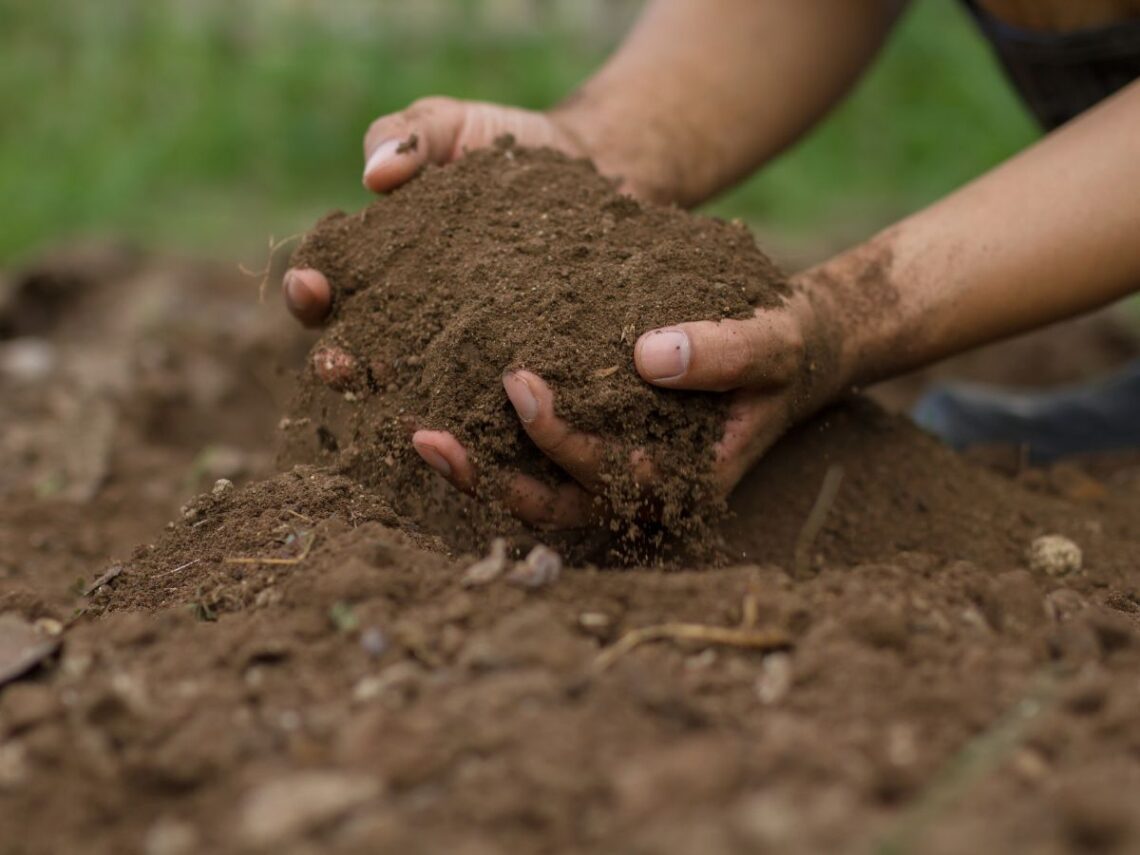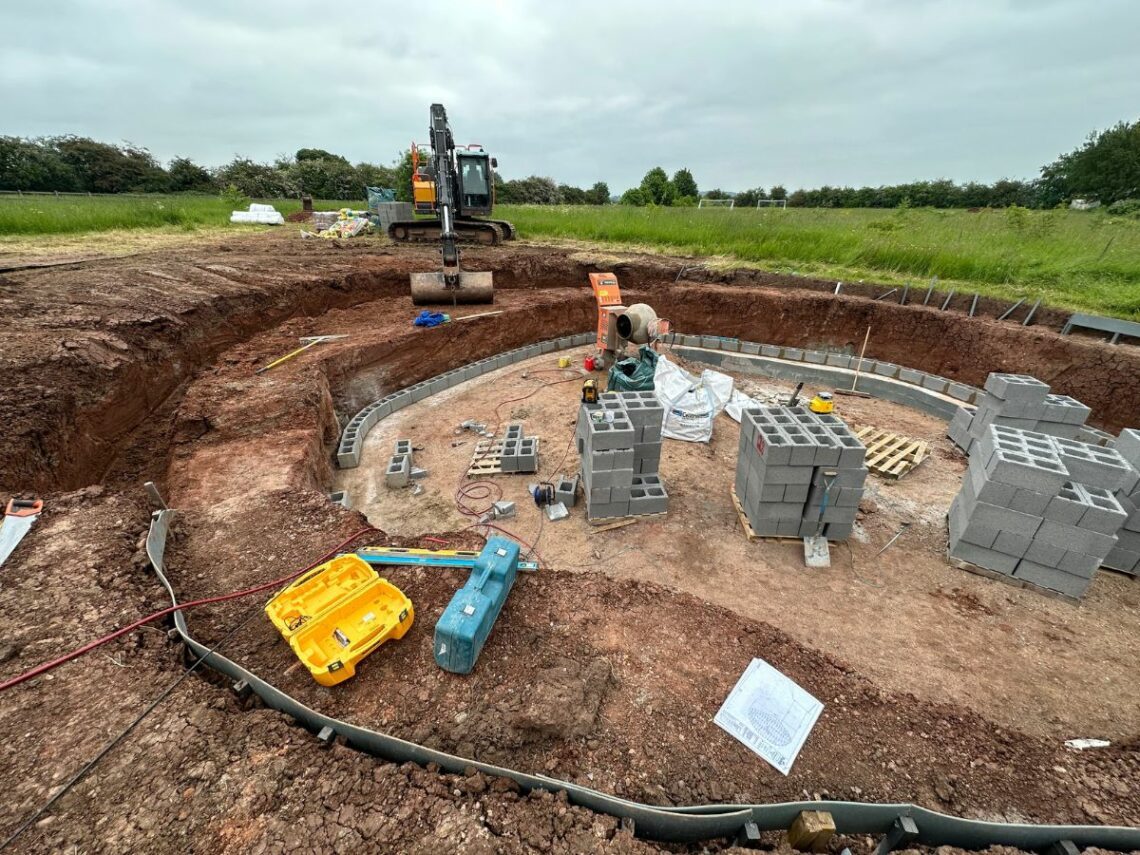Have you ever thought about how your garden soil could influence your dream swimming pond? Soil isn’t just a foundation—it’s a vital player in crafting a natural swimming pond or wild swimming pool that stays crystal clear and safe. By understanding your soil type and its quirks, you can optimize both your pond design and installation timing.
This guide will walk you through identifying your soil, the best seasons for pond building, and how soil impacts costs and design. Let’s explore how to turn your soil into the perfect base for a stunning swimming pond.
What’s Your Soil Type? A Simple Test for Swimming Pond Builders
Understanding your soil is the first step in pond construction. Here’s how to test yours:
- Grab a Handful: Take some damp soil from your garden.
- Feel Its Texture: Squeeze it in your hand and observe its response.
- Sandy Soil: Feels gritty, won’t stick together, and crumbles through your fingers.
- Clay Soil: Feels sticky when wet, can be rolled into a sausage, and smooths to a shine when rubbed.
- Loam Soil: Feels velvety when dry, forms a weak ball when damp, and crumbles easily.
- Silt Soil: Feels slippery or soapy and doesn’t clump easily.
- Chalk Soil: Contains large lumps, resists molding, and is alkaline with excellent drainage.
- Peaty Soil: Spongy to the touch and often waterlogged in winter.
Pro Tip: Test your soil’s pH using a kit or professional service. Garden soils typically range between 3.5 (acidic) and 8.5 (alkaline). A pH-neutral soil (around 7) is ideal for most swimming pond designs.

Does the Time of the year matter?
Different soils behave differently throughout the year, making timing crucial for successful pond construction.
- Clay Soil: Early summer is best when the soil is less waterlogged. Wet winters make digging difficult and increase costs.
- Sandy Soil: Autumn or late spring provide balanced moisture levels, preventing overly dry or loose excavation sites.
- Loamy Soil: Offers year-round flexibility, as its structure balances moisture retention and drainage.
- Peaty Soil: Requires summer construction due to water-logging issues during cooler months.
- Chalk Soil: Free-draining properties make it suitable for construction in most seasons.
One of our clients in Surrey had their heart set on a wild swimming pond. However, they faced a challenge—clay soil that seemed impossible to work with. Using our award-winning expertise and unique filtration systems, we developed a plan to manage the clay’s water retention issues.
From Muddy Confusion to a Wild Swimming Pond Paradise
By choosing an early summer construction schedule and incorporating effective drainage solutions, we turned their sticky soil nightmare into a crystal-clear reality. Now, they enjoy the perfect blend of nature and luxury every morning with a swim.
If you’re unsure about your soil’s suitability, why not let us help you create your own transformation story?
How Soil Types Impact Swimming Pond Design
Soil type doesn’t just affect excavation—it influences every aspect of your pond, from design to ongoing maintenance.
Key Impacts on Design:
- Clay Soil: Requires drainage systems to manage water-logging and prevent structural issues.
- Sandy Soil: Needs added sealing measures to avoid leaks due to high porosity.
- Loam Soil: Ideal for swimming ponds, offering natural drainage and structural stability.
- Peaty Soil: May need reinforcement to support heavy equipment during construction.
Ponds by Michael Wheat offers two unique styles of swimming ponds to suit different preferences and site conditions.
- The Hybrid Swimming Pond: This design incorporates carved shelving into the soil, creating a distinctive and natural aesthetic. However, it’s not suitable for sandy or peaty soils due to their unstable nature.
- The Walled Swimming Pond (also known as the Natural Swimming Pool): This option features durable concrete walls, making it ideal for a wide range of soil types, including those unsuitable for the hybrid style.
Each style is tailored to provide a stunning, functional swimming experience while considering the unique characteristics of your garden.
At Ponds by Michael Wheat, our unique filtration method adapts to any soil type. Combining biological, mechanical, and UV filtration, we ensure crystal-clear, safe water without relying solely on plants.

Practical Tips for Swimming Pond Builders
- Test your soil type early in the planning process to identify potential challenges.
- Use a pH test to determine whether your soil needs amendments for compatibility with pond plants or liners.
- Consult with experienced swimming pond contractors to align design with soil conditions and seasonal timing.
Table: Soil Types and Their Impact on Swimming Pond Construction
| Soil Type | Key Traits | Impact on Installation |
|---|---|---|
| Sandy | Quick-draining, gritty | Requires sealing to prevent leaks |
| Clay | Sticky, water-retentive | Needs drainage solutions; avoid winter construction |
| Loam | Balanced mix, nutrient-rich | Ideal for ponds; flexible timing options |
| Silt | Slippery, poor drainage | May need soil stabilization measures |
| Chalk | Free-draining, alkaline | Suitable for most seasons but may require pH adjustments |
| Peaty | Spongy, prone to water-logging | Best built-in dry summer months |
Are You Pond-Ready?
What’s your soil telling you? Whether it’s sandy, clay, or loamy, your soil can support a stunning swimming pond with the right approach. Collaborating with experienced swimming pond builders ensures every detail is covered, from the ground beneath to the water above.
Key Takeaway
Soil is more than just the foundation—it’s a partner in creating your dream natural swimming pond. By testing your soil type and timing construction perfectly, you can enjoy a beautiful, low-maintenance pond that elevates your outdoor space.
Frequently Asked Questions
1. How can I check my soil type at home?
Squeeze damp soil in your hand. Check its texture against our soil type guide above.
2. Will clay soil make my pond water cloudy?
Not if designed correctly we use a liner to seal the pond stopping any contamination and proper drainage and filtration prevent cloudiness and ensure crystal-clear water.
3. Does pH affect swimming pond plants?
Yes, pH influences which plants will thrive. Most prefer slightly acidic to neutral conditions.
4. What’s the best season to build a pond?
It depends on your soil. For example, clay is easiest to work with in early summer.
5. How much does a natural swimming pond cost?
Costs vary by design starting from £75,000 for a Hybrid Swimming Pond Style where we carve shelves into the soil giving it a natural pond look. Or from £95,000 for a Walled Style more constructed natural swimming pool.
Conclusion: Turn Your Soil into a Pond Paradise
Your soil holds the key to creating a bespoke natural swimming pond or wild swimming pool. With 13+ years of expertise and award-winning designs, Ponds by Michael Wheat adapts to every soil type and delivers crystal-clear water you’ll love.
Contact us today to start building your perfect swimming pond. Together, we’ll turn your garden into a breathtaking oasis.